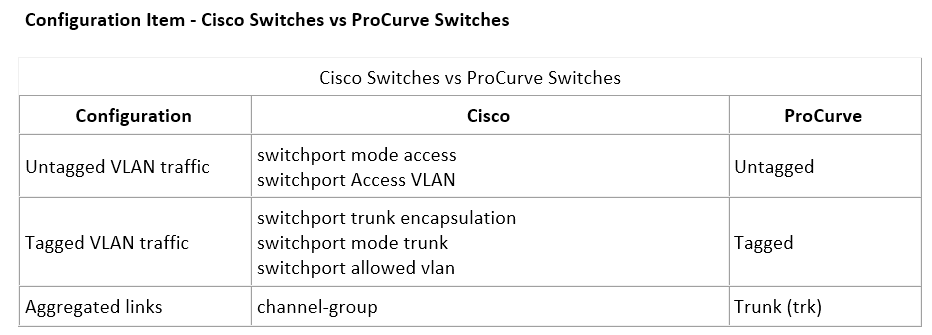I’ve been working with HP Enclosures and Cisco devices a long time now and these always get confusing when trying to explain it to people. I hope below helps clear it up.
General Guidelines:
• An “access port” on Cisco is an “untagged port” on ProCurve.
• A “trunk port” on Cisco is a “tagged port” on ProCurve.
• The “port channel” on Cisco is “link aggregation” and is called a “trunk” on ProCurve.
• When a single end-user device such as a PC is connected, the connection from a VLAN point of view is untagged. Cisco refers to this kind of port as an “access port”.
• When a phone and cascaded PC are connected, normally one VLAN is untagged for the data traffic of the PC, and the other is tagged for the voice traffic of the phone. On Cisco devices, this is called an “access-port with auxiliary VLAN”. Note that Cisco recently changed this nomenclature and now calls it a “multi-VLAN access port”.
• Trunking from the ProCurve side is meant to aggregate multiple ports together, while on Cisco it is meant to transport multiple VLANs over one port.
• Link aggregation on the Cisco side is called “channeling”. The differences are often primarily a variation in terminology. With regard to standards-based switching and routing, ProCurve and Cisco hardware often perform the same functions, but different language is used to describe them.


